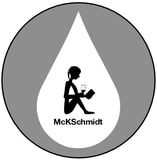|
On Thursday, February 7th, I will be the luncheon guest at the Union League Club of Chicago. It promises to be a lively and informative event as I am to be in conversation with Great Lakes advocate and ambassador David Ullrich*. For more information, visit Eventbrite. I confess that since the talk is over a month away, I had not begun researching the organization—instead spending most of the holidays studying the history of Chicago in the 1890s. After all, that is the backdrop for my next book, a historical fiction tentatively titled, The Box. To my astonishment, the Union League Club of Chicago was a predominant player in the 1890s, influencing a decision by Congress to select the city as the site of the World’s Columbian Exposition—more widely known as the 1893 World’s Fair. Members of this organization convinced the country that Chicago was the best place to create an exposition that would showcase the engineering and industrial strengths of the nation. Visitors to the World’s Fair were introduced to the first Ferris wheel, the zipper, and the Telautograph (first Fax machine). They witnessed the largest AC (alternating current) station in the world—powering all the incandescent lights and lamps of the fair. They were also introduced to the first moving sidewalk in the United States, commemorative stamps and coins, Aunt Jemima Pancake Mix, Cracker Jacks, Pabst Blue Ribbon Beer, Cream of Wheat, Shredded Wheat, and the mass production of Wrigley’s Juicy Fruit gum. But the fair was more than that. At a time when Chicago was described as filthy, foul-smelling, raucous, and smoke-filled, the designers created a city of pristine, white buildings monumental in size and design. Called the “White City,” the exposition influenced the incorporation of architecture, green spaces, and bodies of water into city planning. Designed and built in less than three years, the fair showcased the creativity and innovative spirit of the Chicago people. That is why I am writing a book based in Chicago in the 1890s. In addition to the World’s Fair, Chicago was the site of one of the top engineering wonders of the world—the reversal of the flow of the Chicago River. Completed in ten years against insurmountable odds, the canal now known as the Chicago Sanitary and Ship Canal, was created to protect the city’s primary source of fresh drinking water, Lake Michigan. But that canal now poses one of the greatest environmental threats facing the Great Lakes and the Mississippi River ecosystems. It provides a two-way highway for the movement of aquatic invasive species—detrimental and deadly to both sides of the canal. In his thoughtful epilogue to his book, Building the Canal to Save Chicago, engineer and author Richard Lanyon reminds readers that maintaining the quality of Lake Michigan was what motivated the construction of the canal. That should be the driving force behind today’s decisions, too. In February, the U.S. Army Corps of Engineers will be sending a request for funding to Congress to stop the Asian Carp from entering Lake Michigan through the canal. Once that plan hits my Congressional Representative’s desk, I plan to remind him of four things.
The architect and director of the 1893 World’s Fair, Daniel Burnham, and Chief Engineer Lyman Cooley of the Sanitary District of Chicago and others overseeing construction of the canal faced similar challenges. Not enough time. Not enough money. Too many competing priorities. But they exceeded expectations and created masterpieces—both in less than ten years. We must insist the Army Corps—under the direction of Congress—do the same. *David Ullrich works on numerous boards, commissions, and committees to advance the protection, restoration, and long-term sustainability of the Great Lakes and St. Lawrence region in the United States and Canada. He is active locally in Chicago to improve the quality of life and economic well-being of all Chicagoans. He is expanding his interests to the Great Barrier Reef, Wet Tropics, and other natural features of Australia.
5 Comments
1/5/2019 09:34:25 am
It will be an exciting event!
Reply
Karen
1/5/2019 10:19:12 am
I didn't know The Box was going to be historical too--yay! I loved the tidbits you shared in this blog alone. Can't wait! Your luncheon talk sounds like it will be a smash. Liked the write up on Event Brite.
Reply
Eric Stemle
1/5/2019 10:58:18 am
Good on you, Mary! The Chicago conversation is just one more step in your campaign to save our precious ecology—isn’t it amazing how the stepping stones just seem to appear when you stride with purpose? I mean, just think of the synchronicity of the canal plan and its effect on Lake Michigan and your current work on "The Box." It’s all coming together, my friend. Oh, and the audience is going to love you!
Reply
Pam Daugavietis
1/5/2019 03:15:02 pm
Mary, you are so amazing to me and so inspiring. Thank you for this most informative explanation of your next focus, and godspeed on your book and your participation in what will be a most enlightening event on February 7th. I will be with you in spirit, will light a candle that day for you from across our beautiful Lake Michigan, and eagerly await a full report of how it went in a follow-up post.
Reply
Mary Ellen Miller
1/5/2019 05:12:52 pm
How exciting! I will make sure my Chicago peeps are aware of this event; it's sure to be a smash!
Reply
Leave a Reply. |
From briefcase to pen, paper and camera, one woman's journey to influence
how we care for the environment, our seniors, each other. Available
from your local bookstore or online retailer 
The Ideal Gift Tiny Treasures, a collection of wildflower photographs and poetic prose, available by contacting me. The 2nd Edition of Tiny Treasures is designed for use on PCs, tablets, and phones and is available at online stores. To learn more, click on the Ibook/Ebook button below:
|




 RSS Feed
RSS Feed
